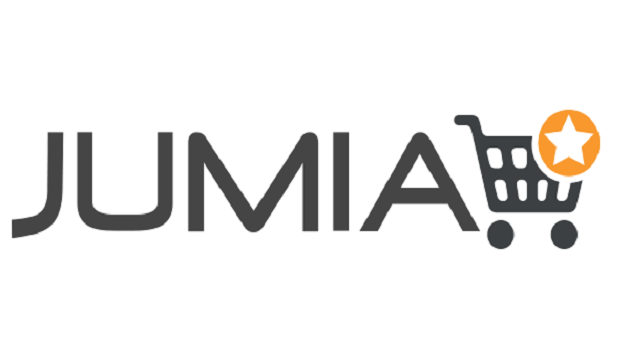E-Business
Iroegbu Gives Essential Tips for Increasing Email Open Rates

Are your email response rates dropping? Are your open rates getting worrisome? If you’re feeling discouraged, don’t be.
Kanu Iroegbu , certified digital marketing consultant sets good news podium teaching practical steps one can take to improve his open rates.
Here are ten tips to try:
1. Set the Right Expectations
Nothing will harm your email marketing open rates faster than failing to deliver what you promised. If you tell your blog readers that your email newsletter will provide behind-the-scenes info, then behind-the-scenes info better be what you give.
This is what they’ll be expecting, and this is why they agreed to subscribe in the first place. Use your site’s Subscribe page to clearly explain what your newsletters offer. This way, the people who sign up will be interested in what you provide, and thus they’ll be more likely to click through to the emails that come.
2. Make Your Subject Line Short
Ideally, your email subject line should be short-easy enough to be read at a glance. Different email providers will display different lengths of text, so longer subject lines have a higher chance of being cut off. To ensure the greatest number of readers see your subject, aim to keep it under 50 characters or so.
3. Make Your Subject Line Intriguing
Assuming you have an engaged audience that is interested in what you have to say, the next best step to achieving better response rates is good subject lines.
The subject line is what appears in a recipient’s inbox, inviting him or her to click. It gets a few seconds of attention before being opened or deleted. So that’s why the best subject lines offer something of value, for minimum risk.
They give the recipient a sense that clicking through to the actual email newsletter will deliver something worthwhile.
What are some examples of intriguing newsletter titles? To put it simply, readers like subject lines that identify your brand, hint at the content inside, and have something to offer them.
For readers who want to stay updated with your company, for example, consider the following examples, written for the (fictional) company Good Deals: October Update on Good Deals; Good Deals October 2013 Newsletter; Good Deals Newsletter #15: October 2013 Edition;Good Deals Invites You to Our Grand Opening!; Upcoming Events at Good Deals; Good Deals Fall Updates; and 20% Off Good Deals Merchandise Now
In every example, the subject line tells the reader what the email is about, identifies the content as from Good Deals, and gives a reason to click.
4. Don’t Be Overly Promotional
According to Constant Contact, it’s a good idea to balance your newsletter content to be 90% educational and 10% promotional.
This means that, sure, you want to tell your audience about your new product or feature, but don’t let that be all you do.
Your newsletter should be more than a sales brochure-it should be an interesting resource. Ask yourself what you can give your readers beyond a catalog, and work that into your content.
5. Send It at the Best Time
You know what they say: “Timing is everything.” The timing of when you send your newsletter may affect how readers respond to it.
Test different schedules to see how your audience responds-while this may differ for various industries, according to the Whole Whale blog, there is evidence that “weekdays outperform weekends, with Tuesday-Thursdays performing the best.”
6. Be Honest about Email Content
Just like your Subscribe page should accurately describe your email content, so should your newsletter subject line.
If a reader clicks the “Big Company News October 2013” email only to find a story from last month, he or she might not click through the next month’s letter. Or worse, he or she might unsubscribe.
7. Avoid Spam Signals Like ALL CAPS and Exclamation Marks!!!
Everybody’s got spam radar these days. Who hasn’t received an email from an overseas prince asking for money?
Because of this, readers are more cynical-and this means they’re looking at your email newsletter with caution, at least the first time they see it. To help build credibility and keep yourself from looking like a spammer, avoid spam giveaways like writing in all capital letters or using multiple exclamation marks.
8. Avoid Salesy Language
Words like “exciting,” “leading,” and “ultimate” tend to sound salesy. Readers see them and think advertising.
So to keep from getting deleted, make your subject lines benefit-driven rather than sales-focused.
9. Consider a Negative Subject Line
“People will always work harder to keep something they have rather than try to gain something that they want,” says Sean Platt at Copyblogger.
That’s why negative headlines can be so powerful-they alert your readers to potential problems they could protect themselves against. Here are a few examples: Five Reasons You Won’t Want to Miss This Weekend Sale; Good Deals Update: Are You Making These Shopping Mistakes?
4 Things You Might Be Missing on Our New Blog
10. Optimize for Mobile Devices
A large percentage of your readers will receive your email newsletter while they’re on their mobile devices.
Consider how your email newsletter will appear on a mobile device. Before sending it out to your entire list, send a test version to your own email. Check for display problems, broken links, and so on.
E-Business
GenAI Adoption Among African workers Outpace Global Peers

Africa’s workforce is embracing artificial intelligence (AI) at a faster pace than global peers, but pressure is mounting for organisations to ramp up digital skills development as generative AI (GenAI) begins reshaping roles across industries.

This is according to PwC’s Global Workforce Hopes and Fears Survey 2025, which shows a continent ready for AI-enabled transformation, but facing a narrowing window to prepare, through skills development initiatives.
The survey, covering nearly 50 000 workers worldwide and 1 753 across South Africa, Algeria, Kenya, Morocco and Nigeria, finds that African employees are already integrating AI into daily operations.
Sixty-four percent of respondents in Africa used AI tools in the past year, compared to 54% globally, and the sentiment is overwhelmingly positive. While only 17% report using GenAI every day, confidence in its benefits is high: 76% believe GenAI improves work quality, and 72% expect AI-driven productivity gains within three years.
In SA, executives are even more bullish, as 91% say AI has already lifted both productivity and work quality — a signal that leadership is pushing harder toward AI-enabled ways of working, notes the survey.
However, this optimism is coupled with rising concern about future readiness. Only 35% of African workers believe their skills will still be relevant three years from now. With GenAI expected to affect nearly half of all job roles, PwC warns that the continent’s workforce risks falling behind unless organisations accelerate large-scale reskilling.
Despite the pressures, employees are not standing still. PwC notes that African workers outperform their global peers in proactive learning, recording 15% higher participation in skills-building and receiving 6% more support from managers. This indicates that both workers and immediate supervisors recognise the pace of AI adoption and are pushing to adapt.
PwC Africa people and organisation leader, Dr Dayalan Govender, says the moment calls for decisive leadership. Organisations, he argues, must integrate AI into workforce strategies, accelerate digital adoption, and expand upskilling programmes at scale.
“Africa’s workforce is optimistic and ready for change, but leaders must accelerate digital adoption and invest in future-ready skills to convert this optimism into sustainable growth,” he says.
Beyond the technology shift, the survey captures a workforce hungry for growth but constrained by financial pressure. Many employees are preparing to make career moves: 45% plan to request a raise, and another 45% aim for a promotion in the next year. Yet household financial stability remains strained, with only a third of respondents reporting any money left over for savings.
Still, Africa’s workplaces continue to show strong foundations of trust and purpose — elements PwC believes will be critical in navigating GenAI disruption. More than 55% of workers trust management, and two-thirds say their work feels meaningful, both above global averages.
With AI adoption rising and employees motivated to reinvent their careers, PwC warns that the coming years will determine whether Africa’s early optimism translates into long-term competitiveness as GenAI transforms the world of work.
The report calls for embedding AI into workforce strategies to bridge the gap between optimism and practical adoption, scaling upskilling initiatives to prepare for GenAI disruption, and fostering trust and psychological safety to retain talent and drive innovation.
“For employers, these findings are a stark reminder that they can and should do more to help workers understand, adopt, and embrace AI’s transformative power.
“Employers may need to pay special attention to entry-level workers, nearly a third of whom say they’re worried to a large or very large extent about AI’s impact on their future, even as they’re also curious (47%) and optimistic (38%) about its long-term societal effects,” notes the report.
E-Business
Nigeria Records Highest Weekly Cyberattacks in Africa — Report

Nigerian organisations are facing the highest volume of weekly cyberattacks in Africa, according to the newly released African Perspectives on Cyber Security Report 2025 by Check Point Software Technologies Ltd., a global leader in cybersecurity solutions.

The report revealed that Nigerian firms experience an average of 4,200 attacks per week, significantly higher than the continental average of 3,153 and 60 per cent above the global average of 1,963 attacks per organisation.
The findings highlight a sharp rise in attacks across Africa, driven largely by artificial intelligence-enabled threats.
Kingsley Oseghale, country manager for West Africa at Check Point, said attackers are increasingly using AI to automate phishing, impersonation, and cloud exploitation.
“AI has become part of the attack surface,” Oseghale said. “Attackers are using it to automate phishing and identity theft at scale. The only effective response is prevention-first security that combines visibility, governance, and AI protection.”
The report noted that cybercriminals are exploiting exposed identities and misconfigured systems to target critical sectors, including finance, energy, telecoms, and government.
Identity-led intrusions, AI-generated phishing campaigns, and multi-vector ransomware are on the rise.
Across the continent, Check Point identified key trends in different markets. Nigeria is experiencing business email compromise and cloud exploitation; South Africa faces rising ransomware, smishing, and botnet infections such as Vo1d and XorDDoS; Kenya has seen ransomware targeting critical energy infrastructure; and Morocco has experienced coordinated government and education-sector disruptions via DDoS and website defacement attacks.
The report highlights five major shifts shaping Africa’s cyber risk in 2025.
Traditional ransomware has evolved into data-leak extortion, AI-generated deception is widespread, and identity has emerged as the new security perimeter.
Weak cybersecurity, the report warned, can now affect international market access under regulations such as the EU’s NIS2 Directive, making digital resilience an economic necessity.
The study urged African businesses and governments to adopt prevention-first security strategies, including continuous risk assessment, regulatory readiness, and public-private collaboration.
Oseghale emphasised that, as AI reshapes operations, cybersecurity must shift from reaction to prediction.
“The real challenge is not adopting new technology but securing the trust that underpins it,” he said.
E-Business
Jumia’s Data Shows Nigerians Turning to Digital Retail to Navigate Inflation Pressures

As Black Friday 2025 unfolds across Nigeria, new insights from Jumia’s Q3 2025 financial results reveal that more Nigerians are relying on digital retail to navigate inflation and rising living costs.

The data points to a more deliberate, value-driven shopper, one using online platforms to stretch budgets, compare options quickly, and extract more value from each purchase.
Jumia reported a 30 percent year-on-year increase in physical goods orders, while Gross Merchandise Value for physical goods rose by 43 percent.
This stronger GMV growth highlights a clear behavioural shift: consumers are assembling higher-value baskets by combining essentials with premium or long-term household items. Online retail is serving as a tool for strategic planning, not just convenience.
According to Temidayo Ojo, Chief Executive Officer of Jumia Nigeria, Black Friday now plays a more critical economic role. “Households are using digital retail to defend purchasing power. They plan their lists, compare prices instantly, and rely on the reliability and convenience that e-commerce offers,” he said.
This year’s Black Friday trends show growing demand in categories that directly support daily living. Household essentials and FMCG products are seeing significant uptake as families stock up during price drops. Home and kitchen equipment is also experiencing stronger demand as shoppers prioritise practical, durable tools. Affordable fashion and beauty products are gaining momentum as discounts make them more accessible.
Consumer behaviour in the lead-up to the sales period further reinforces this shift. Jumia recorded a notable increase in “Add to Wishlist” and “Add to Cart” activity, signalling more planning and fewer impulse purchases. The gap between GMV and order growth indicates that customers are optimising baskets using bundles, vouchers, and promo combinations, behaviours uniquely suited to digital platforms.
With inflation intensifying the need for smarter buying, trust markers on Jumia, such as verified sellers, official brand stores, ratings, and clear return policies, are becoming more central to decision-making. Authenticity and durability now outweigh the appeal of the lowest price.
Jumia’s logistics footprint is making these benefits available nationwide. Its 30,000 sqm Isolo fulfilment centre, 480 pickup stations, and 62 logistics partners ensure that customers in secondary and peri-urban cities enjoy the same deals as those in major hubs, reducing travel burdens and adding financial value.
Overall, Jumia’s Q3 data and Black Friday trends show that Nigerians are turning to digital retail as a practical, strategic response to inflation, using e-commerce to manage budgets, preserve purchasing power, and make more informed buying decisions.

 E-Business3 days ago
E-Business3 days agoNigeria Records Highest Weekly Cyberattacks in Africa — Report

 E-Business3 days ago
E-Business3 days agoJumia’s Data Shows Nigerians Turning to Digital Retail to Navigate Inflation Pressures

 Broadcasting2 days ago
Broadcasting2 days agoIt is Official, DStv Confirms Termination of 16 Major Channels

 News3 days ago
News3 days agoSEC to Enhance Investor Engagement with USSD Code, ISS Audio

 Telecom3 days ago
Telecom3 days agoAirtel Nigeria Wins Best in Technology for Development @ 2025 SERAS Awards

 Telecom3 days ago
Telecom3 days agoNigeria-South Africa Chamber Celebrates Silver Jubilee of Bilateral Trade Ties

 News3 days ago
News3 days agoFirm Detected Half a Million Malicious Files Daily in 2025

 News3 days ago
News3 days agoNEC Endorses N100Bn Overhaul of Police and Security Training Facilities



























